Natular G30 as a Larval Pretreatment Option in the Cayman Islands: Product Stewardship and Partnership
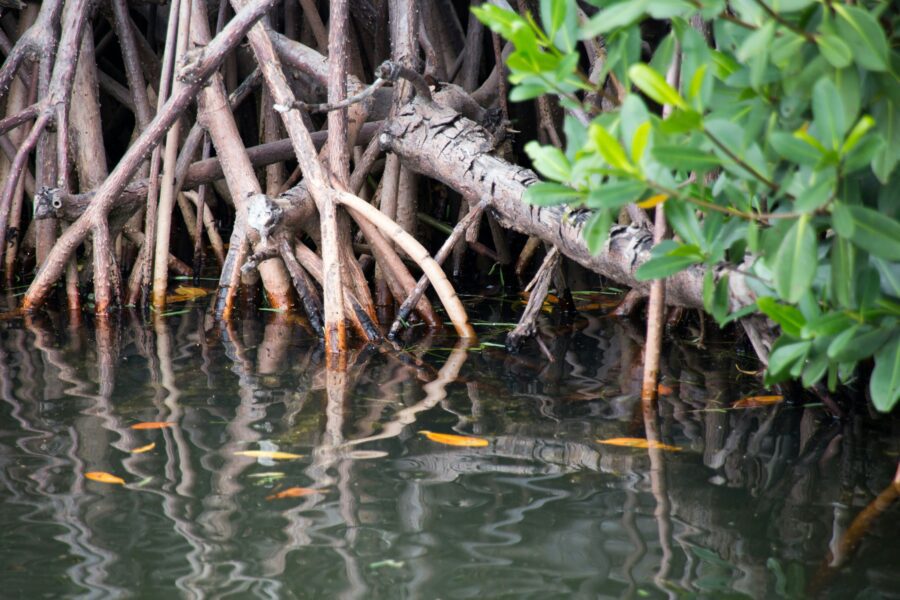

The Cayman Mosquito Research and Control Unit (MRCU) employs an Integrated Pest Management strategy, which incorporates various methods, including physical, biological, and chemical control, to mitigate mosquito nuisances and safeguard against mosquito-borne illnesses, such as malaria and dengue, prevalent in the region.
The MRCU has utilized Clarke’s Natular© formulations as part of their larviciding strategy for several years, yielding strong control results. As part of Clarke’s commitment to product stewardship, our field science team has also worked closely with the MRCU to optimize Natular for its operations.
Due to variable conditions surrounding the start of the island’s rainy season—and mosquito breeding season—the MRCU became interested in researching mosquito larvae pretreatment options. In particular, the viability of Clarke’s Natular G30 as a pretreatment option for up to six weeks ahead of flooding and large tidal events that produce mosquito breeding conditions.
Historically, the Cayman Islands has two rainy seasons that occur around May or June and September and October. The actual start of these rainy seasons can begin at any point during this two-month time frame, making efficient and effective larviciding—particularly of areas that become difficult to reach once flooded—hard to plan for. For example, it can take up to three weeks for aircraft to reach the island’s salt marshes due to severe wind and rain.
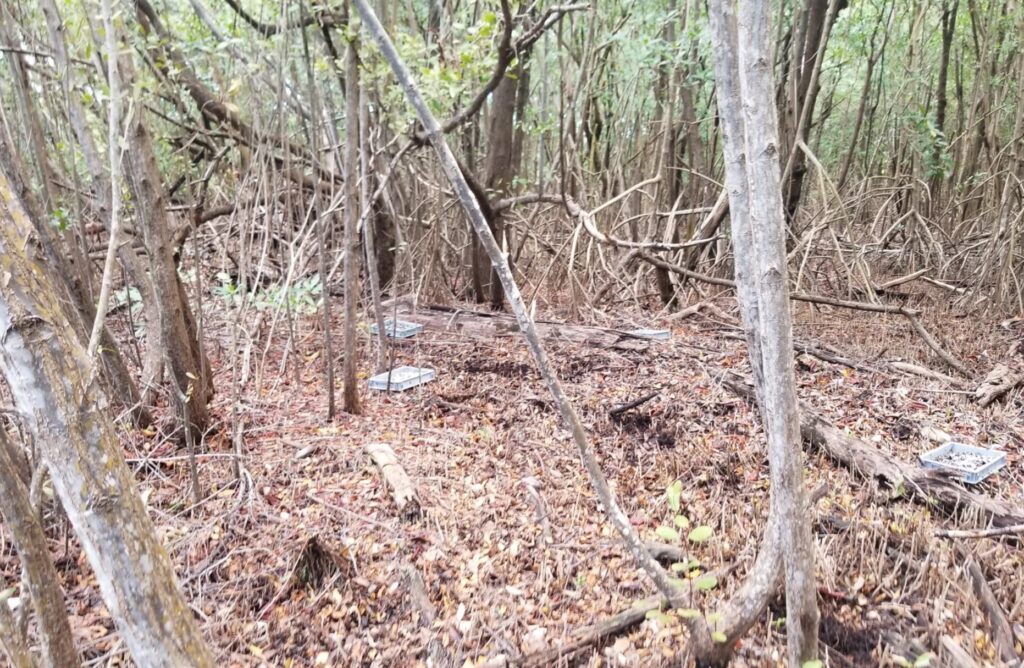
To combat this, the MRCU began seeking options for larval products that could double as pretreatment options to keep egg banks low when operations could not perform active treatments. This product must also maintain effective control in harsher environments, such as salt marshes and mangrove fields, for up to six weeks before flooding. Natular G30 became a contender for this product, especially due to its pretreatment labeling and effective length of control.
In other words, MRCU needed to know if they could treat four to six weeks in advance of their typical rainy season with Natular G30 and still have effective control once flooding occurred.
To determine this, the MRCU and Clarke worked together to determine the amount of Natular’s active ingredient (AI), spinosad, in weathered granules and the ability of weathered granules to control mosquito larvae.
To weather the Natular G30’s granules, the team set up eight containers filled with soil from a typical treatment area within a mangrove salt marsh site. The team then treated these containers with fresh Natular G30 product and left in the site where they were exposed to rain, sunlight, and microbial degradation for six weeks, with samples taken at weekly intervals.
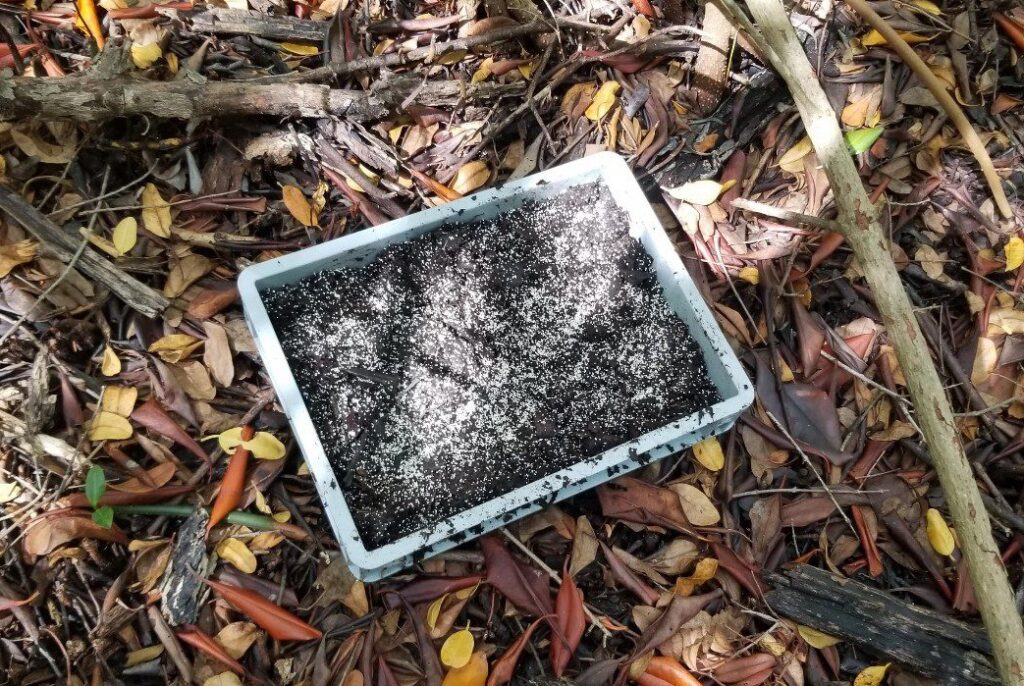
Measuring the Amount of Spinosad in Weathered Granules
The first portion of the study was to determine whether adequate levels of Natular’s AI, spinosad, remained in the product’s granules after multiple weeks of weathering. The weathered Natular G30 product granules were collected and sent to Clarke’s laboratory, where they underwent high-performance liquid chromatography (HPLC) to determine the amount of spinosad that remained in the granules. HPLC uses dissolved A.I. in various solvents, in this case, spinosad extracted from weathered Natular G30 granules, for a quantitative analysis of how much the component is in the sample.
Overall, fresh Natular G30 product granules contained 2.5% its spinosad active ingredient. Each week, a small drop in the amount of spinosad was observed, with samples containing just under 2% by week six of weathering – a decrease of 26%.
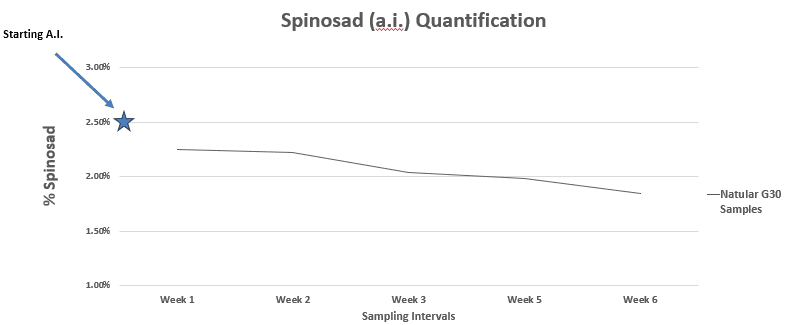
Determining the Control Efficacy of Weathered Natular G30 Granules
From here, the team needed to determine – whether this amount of AI within the weathered enough to control larvae upon flooding effectively.
To do so, Clarke’s lab performed bioassays of the sampled weathered granules using fresh Natular G30 product as a positive control.
The lab situated five-gallon buckets filled with four gallons of water containing 20 third-instar Aedes aegypti larvae each. The samples of weathered Natular G30 granules at each weekly interval were then applied to these buckets at G30’s application rate of 9 pounds per acre—with larvae being added at weekly intervals each week for six weeks total.
Clarke’s lab then recorded results at 24, 48, and 72 hours post-larval introduction.
As seen in the chart below, bioassays showed excellent mortality for five or more weeks with up to 6 weeks of environmental exposure – regardless of the length of environmental exposure.
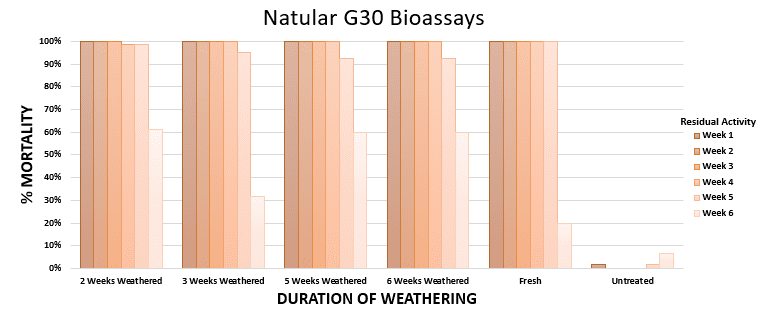
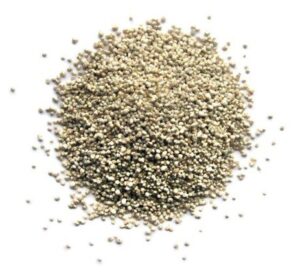 In summary, the Cayman Islands face the challenge of unpredictable rainy seasons, complicating larviciding efforts. To address this, the MRCU explored options for larval products that could serve as effective pretreatments to keep mosquito egg banks low during periods when active treatments are not feasible.
In summary, the Cayman Islands face the challenge of unpredictable rainy seasons, complicating larviciding efforts. To address this, the MRCU explored options for larval products that could serve as effective pretreatments to keep mosquito egg banks low during periods when active treatments are not feasible.
Natular G30 emerged as a promising candidate due to its pretreatment labeling and extended control duration- but it needed to be determined whether the product could be applied four to six weeks ahead of the typical rainy season and still maintain effective control once flooding occurred.
Collaborating with the MRCU, Clarke took this challenge on as an extension of our commitment to product stewardship. Our labs assessed the spinosad content in weathered Natular granules and their ability to control mosquito larvae. Fresh Natular G30 granules contained 2.5% spinosad, and even after six weeks of weathering, samples retained nearly 2% of the active ingredient. Bioassays demonstrated excellent mortality rates for up to six weeks of environmental exposure, regardless of exposure length.
All of this data corroborated that Natular G30 is a great option for pretreatment in the Cayman Islands.